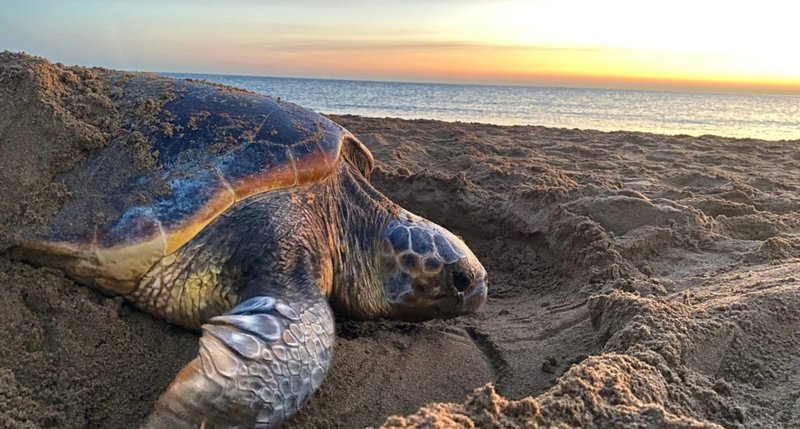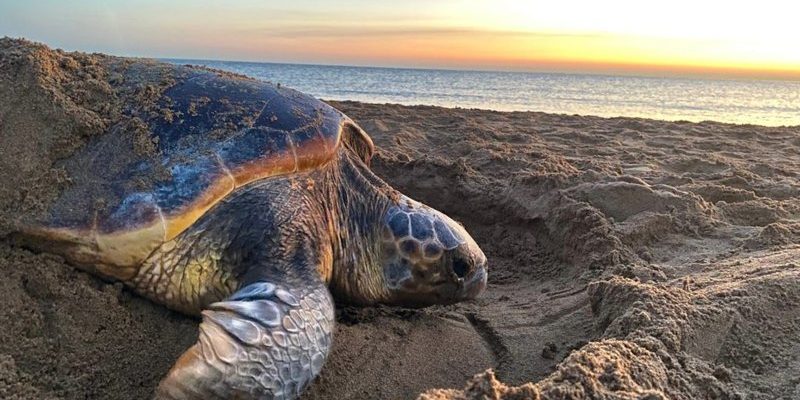
Imagine these turtles as ocean nomads, navigating the vast blue expanse for decades. They rely on delicate ecosystems for food and nesting grounds. But as the climate shifts, those very habitats are changing, often in ways that threaten their survival. So, let’s dive into the nitty-gritty of how climate change affects loggerhead turtles and their world.
Understanding Loggerhead Turtles
Loggerhead turtles are fascinating creatures, known for their large size and unique features. They can weigh up to 400 pounds and have a shell that can grow up to three feet long. These turtles are primarily found in warm ocean waters, nesting on beaches with soft sand. If you’ve ever seen a turtle make its way to the ocean after hatching, you know it’s a remarkable sight.
These turtles have a diet that mainly consists of jellyfish, crustaceans, and other marine animals. They play an important role in maintaining healthy ocean ecosystems by controlling jellyfish populations. That’s right—when they eat jellyfish, they help maintain a balance that benefits other marine life.
Unfortunately, loggerhead turtles are classified as vulnerable due to threats like habitat loss, fishing bycatch, and, increasingly, climate change. Understanding their biology and ecology is crucial to grasp the challenges they face and the importance of conserving their populations.
The Impact of Rising Sea Levels
One of the most daunting effects of climate change is the rise in sea levels. This phenomenon is primarily due to melting ice caps and the expansion of seawater as it warms. For loggerhead turtles, rising sea levels mean that their nesting beaches could disappear or become unsuitable.
Imagine a mother loggerhead turtle painstakingly climbing up a beach to lay her eggs, only to find it submerged by rising waters. This scenario isn’t just hypothetical; it’s a reality many turtle populations are already grappling with. Nesting sites critical for the survival of hatchlings are shrinking, leading to fewer successful births and contributing to their declining numbers.
Additionally, as beaches erode, the quality of nesting sites diminishes. Nesting on hard-packed sand or debris-strewn beaches can lead to high egg mortality rates, further straining their populations. It’s a sobering thought when you consider how vital these sites are for the continuation of this species.
Temperature Changes and Sex Ratios
Here’s the thing: loggerhead turtles have a fascinating quirk in their biology. The temperature of the sand where their eggs are laid determines the sex of the hatchlings. Warmer sand generally produces more females, while cooler sand results in more males.
With rising temperatures from climate change, we’re seeing a skewed sex ratio—a potential crisis for loggerhead turtles. If too many female turtles are born, and not enough males, it threatens the breeding population. A healthy balance is crucial for genetic diversity and long-term species survival.
In some regions, researchers have reported nests producing up to 90% female hatchlings due to elevated sand temperatures. As you can see, this imbalance could have serious implications for the future of loggerhead turtles and their ability to reproduce effectively.
Threats from Ocean Acidification
Ocean acidification is another consequence of climate change that directly impacts marine life. As the atmosphere warms, excess carbon dioxide is absorbed by the oceans, leading to more acidic waters. This change can have detrimental effects on the marine food web, particularly for creatures like jellyfish that loggerhead turtles consume.
If the populations of jellyfish decline due to acidified waters, loggerhead turtles may struggle to find adequate food sources. This could lead to malnutrition and reduced reproductive success. It’s a ripple effect that starts at the very foundation of the marine ecosystem, showcasing how interconnected everything is.
Moreover, ocean acidification threatens coral reefs and other habitats that support marine biodiversity. Without these crucial ecosystems, loggerhead turtles and many other species face a more uncertain future.
Human Activity and Coastal Development
While climate change plays a significant role in the challenges facing loggerhead turtles, human actions also contribute to their plight. Coastal development for homes, resorts, and infrastructure disrupts their natural nesting habitats. This development often leads to increased pollution, which can affect the health of marine environments.
When beaches are altered or developed, it not only reduces the nesting area available for these turtles but also increases the chance of human-turtle interactions. This can lead to more incidents of accidental deaths, as turtles might encounter vehicles or other hazards during their nesting processes.
Educating communities about the importance of protecting these habitats is vital. By promoting conservation efforts and responsible coastal development, we can help ensure safe nesting sites remain for loggerhead turtles.
The Road to Conservation and Recovery
Despite these daunting challenges, there is hope. Conservation efforts are underway around the globe to protect loggerhead turtles and their habitats. Many organizations work tirelessly to establish protected nesting sites, rescue injured turtles, and educate the public about the importance of marine conservation.
For example, nesting beaches are monitored and protected, ensuring that females can safely lay their eggs. Awareness campaigns can help reduce human interference and promote sustainable practices that benefit both turtles and the environment.
You might be wondering, “What can I do to help?” Simple actions like reducing plastic use, participating in beach clean-ups, and supporting organizations dedicated to turtle conservation can make a difference. Every little bit helps in the grand scheme of protecting these magnificent creatures.
Climate change is a significant threat to loggerhead turtles, affecting everything from nesting habits to food sources. The intricate web of life in the oceans is fragile, and the impact of our changing climate is profound. However, understanding the challenges these turtles face is the first step toward making a real difference.
We can all play a role in their conservation—whether through advocacy, education, or simply being mindful of our own environmental footprints. As we work together to combat climate change and protect the habitats of loggerhead turtles, we’re not just preserving a species; we’re safeguarding the health of our oceans for generations to come.

